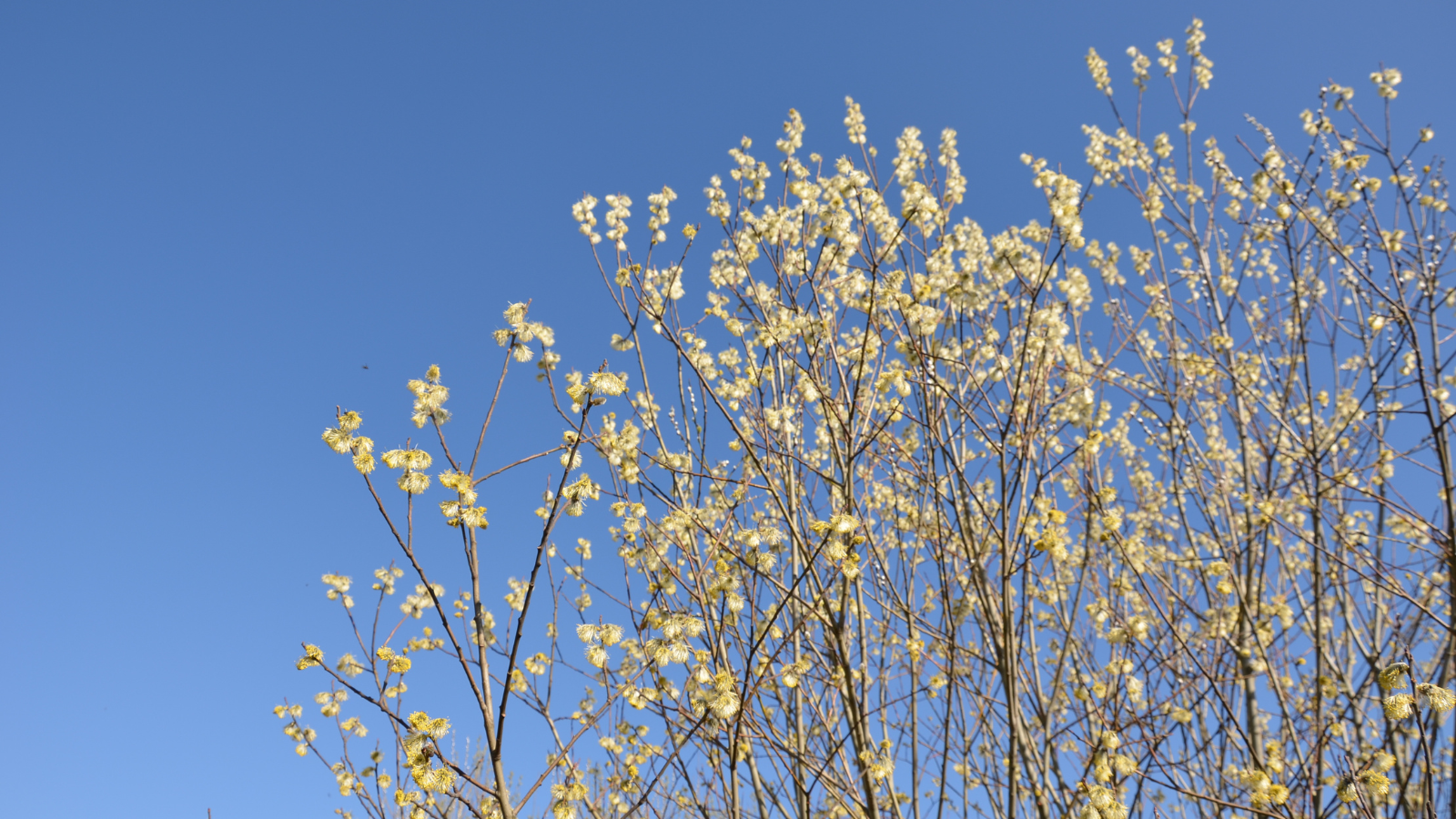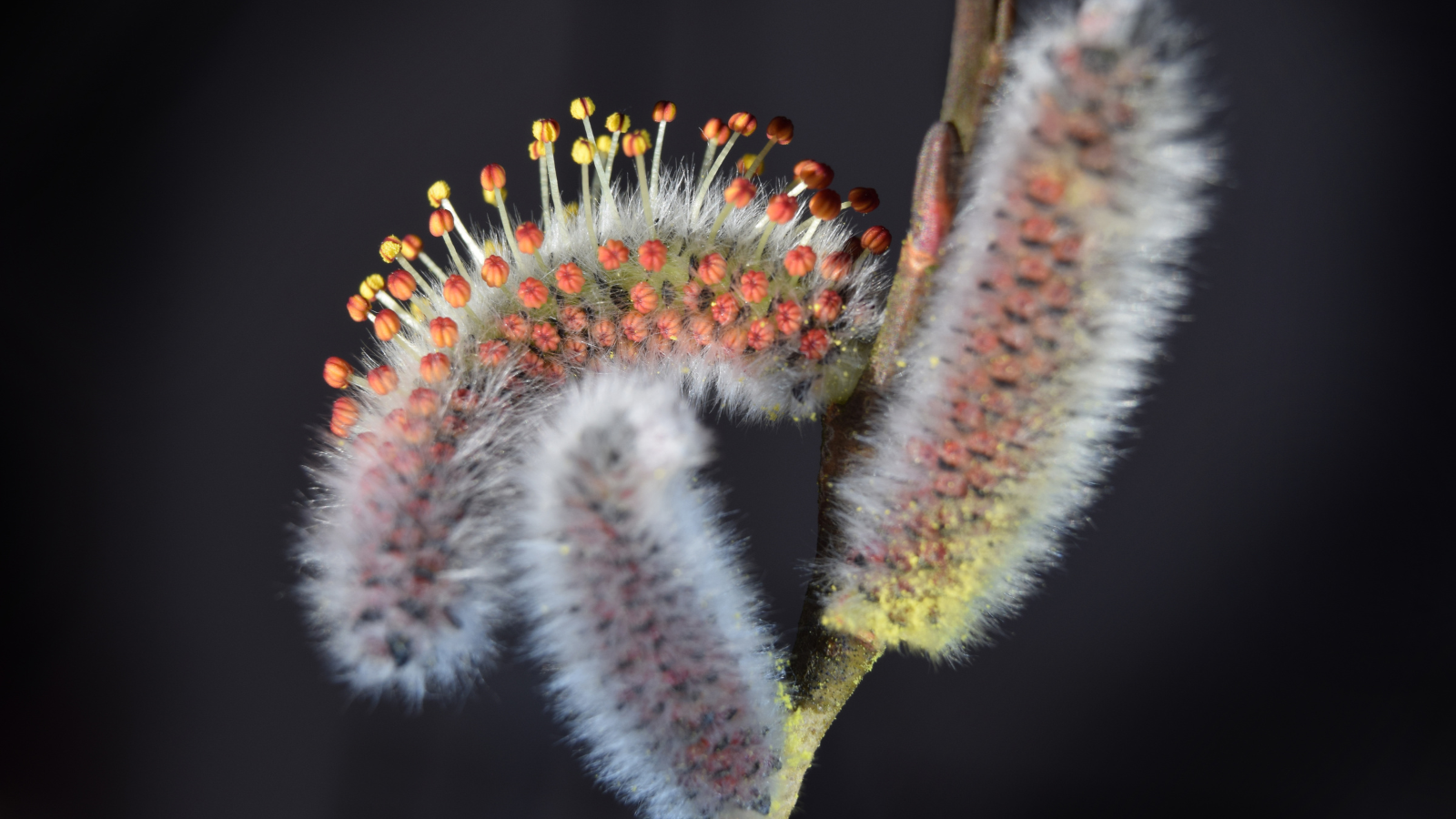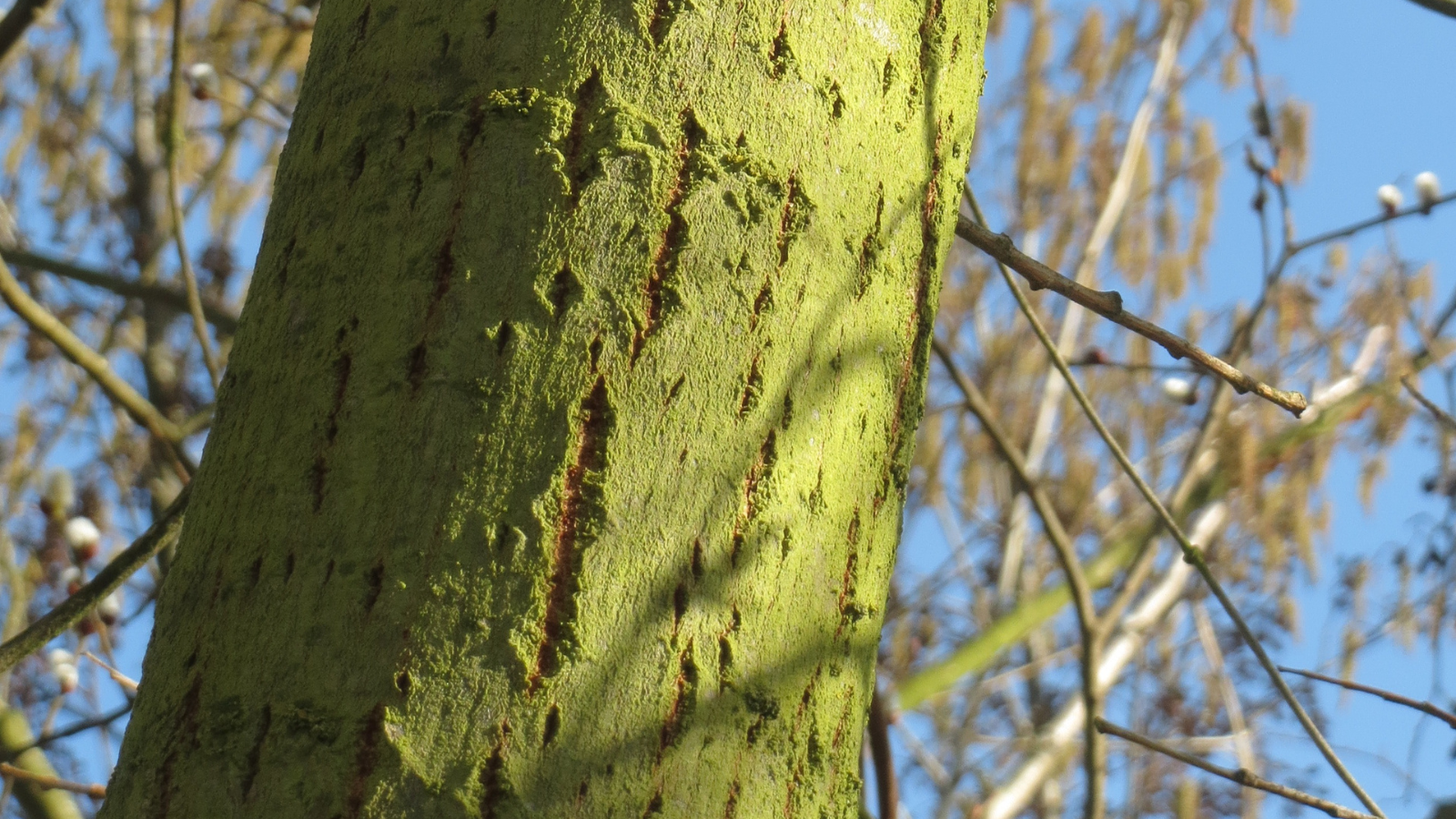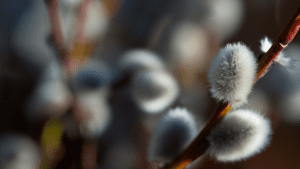Goat Willow
(Salix caprea)
Goat willow, a magnificent tree that not only graces our landscapes with its beauty but also plays a vital role in supporting wildlife and combating the challenges posed by climate change.
Scientific Name: Salix caprea
Family: Salicaceae
Average Height: Typically, the goat willow is a small tree reaching an average height of 6-8 metres, proudly displaying its elegant and slender form.
Average Canopy spread: The goat willow's canopy gracefully extends, on average, to about 4-6 metres, providing shade and shelter for various creatures.
Preferred Ground Conditions/Habitat: This tree thrives in moist and well-drained soils, often found near rivers, ponds and wetlands. It exhibits a fondness for the sunlight, frequently inhabiting woodland edges, hedgerows and open areas.
How to Identify Goat Willow
Goat Willow Leaf ID: The goat willow's leaves are deciduous, measuring around 5-10 centimetres in length. They are broad, ovate and feature a wavy and slightly serrated edge. They are a dull, dark-grey green on top and woolly below.


Goat Willow Flowers ID: In early spring, before the leaves unfurl, the goat willow puts on a stunning floral display. Its male and female flowers emerge on separate catkins. The male catkins are long and golden-yellow, adding a delightful touch of colour to the landscape. Unlike other catkins that typically hang down, those of the goat willow are held upright.
Goat Willow Fruit ID: Following the pollination of the female flowers, fruits develop which are silver-green at first, then woolly.
Hair on the seeds helps dispersion by the wind. They are produced in huge numbers and have the potential to travel large distances.


Goat Willow Bark ID: The goat willow's bark is smooth and grey when young, gradually developing fissures and becoming rougher with age.
What Native UK Wildlife Does Goat Willow Support and How Does It Support Them?
The goat willow is a true hero for the native wildlife of the United Kingdom. Its flowers serve as an early source of nectar for bees, hoverflies and butterflies, playing a vital role in supporting pollinator populations. The leaves provide sustenance for various moth caterpillars, including the magnificent purple emperor butterfly (Apatura iris). Furthermore, the tree's dense foliage offers shelter and nesting sites for birds such as chiffchaffs, willow warblers and long-tailed tits. The goat willow is truly a sanctuary for wildlife, fostering biodiversity in our landscapes.
Properties and Uses of Wood/Parts of the Goat Willow
The goat willow’s wood is quite soft, so it isn’t particularly prized for construction, but it can be used for making paper pulp. Additionally, the tree's catkins and buds have been utilized in traditional medicine for their medicinal properties. As an eco-friendly material, the goat willow's branches can be employed in gardening practices, providing support for climbing plants and acting as natural fencing. The tree's environmental contributions and its various practical applications make it a valuable asset in sustainable resource management.

Start your tree planting journey today. Join I Dig Trees and be a part of something truly special.
Together, we’re taking positive action - planting millions of trees for climate, wildlife and communities.
